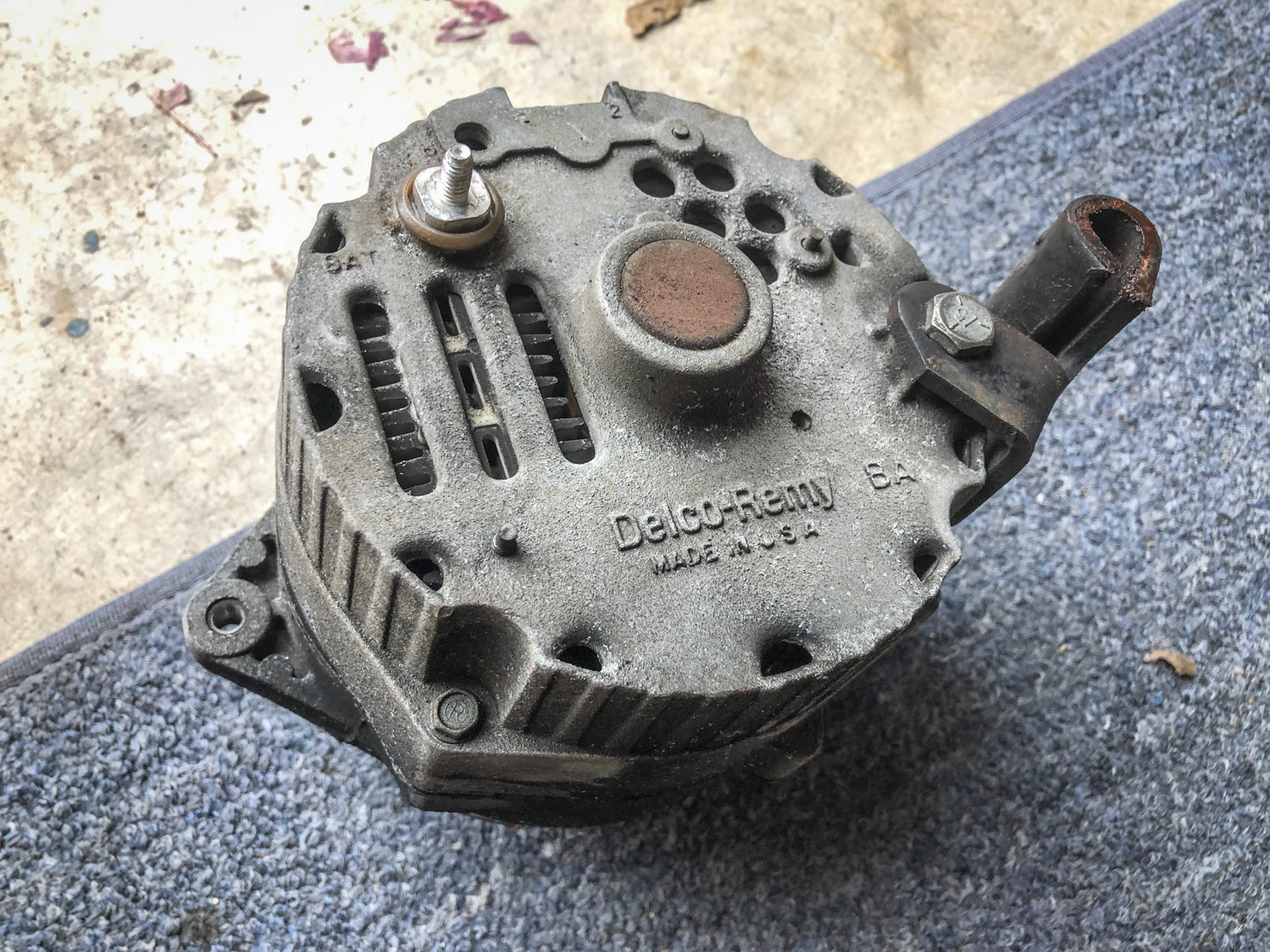Media | Articles
When a chronic dead battery just means a broken alternator, the fix is simple
One of the venerable vehicles I’m always messing around with is my 1977 Chevy C20 Suburban. It’s a little weathered around the edges, but I love it. These “Square Bodies” have a wonderful following, and most everything is really simple to work on.
This one is really well equipped, with a 454 V-8 and heavy-duty everything. The “Trailering Special Package” has a towing capacity of up to 13,000 pounds, but I’m not planning on stressing it out that much. It’s just a fun family rig and has been pretty much relegated to annual runs to pick up Christmas trees or haul stranded people and luggage on vintage car tours. Plus visiting gas stations. Lots of gas stations.
The most recent issue the Suburban presented was a persistent problem where the battery was going flat. Here’s how I found the source and fixed the problem.

I went to fire it up one day, and it was dead. We’ve all heard that clicking sound and then silence, which tells you that it’s time to get the jumper cables. The truck does have a factory voltmeter in the dash, and it was definitely corroborating the evidence with a reading of around 8 volts with the key on, barely registering from the low side of the gauge. I pulled my trusty battery charger off the shelf, connected it, and left it alone for a while to charge. The battery wasn’t that old, and being your typical automotive miser I really wanted to save it and not just buy another $110 replacement battery. Hey, that money could go in the gas tank!
Marketplace
Buy and sell classics with confidence
After an hour or so, I went back to the truck and gave it another go. WHOOOMPH, no problem—it fired up and settled into a nice roaring cold idle like normal. Then, some testing. Why did the battery go flat? The factory Voltmeter was reading 12V or thereabouts, a good indicator that the charging system probably wasn’t working correctly, as you’d generally expect a reading between 13–14V with the engine running. Doing this kind of basic testing can really help to point you in the direction of a quick solution.

First off, I moved under hood and did my diagnosis there to make sure I wasn’t just dealing with a 42-year-old factory gauge that wasn’t reading accurately. I connected a relatively modern Stewart Warner voltmeter with alligator clips to the battery terminals as a quick test, and sure enough it was reading no charge, even when I revved up the motor by moving the carburetor linkage. I felt this definitely pointed to something being up with the alternator, so I moved to that.

The alternator was an original spec Delco-Remy, and from the looks of it could have been the original. The belt looked okay, and I hadn’t noticed any screaming bearing noise, so my guess was that the diodes inside had given up the ghost. Removing this piece was fortunately a five-minute affair—try that in a Porsche 911—and I ran down to my local parts store. They had an alternator testing machine, and since the employee manning the counter didn’t know how to use it, they turned me loose with it. It gave my alternator a failing grade from whatever the machine was doing, so at that moment I committed to my normal process of throwing parts at car problems. I splurged like a Kardashian at Neiman Marcus and bought an improved 65-amp version, which was up a few amps from the one that was on it. Big spender—52 bucks!

Back home, five more minutes, and—bada bing—I had the new alternator installed and ready to test. It’s too bad I don’t have any photos of the comedy that ensued moments later, when I accidentally knocked the + and – alligator clips together on my previous test gauge, causing a couple of fiercely glowing wires and lots of smoke, followed by my normal expulsion of colorful language. Fortunately, no damage to anything other than burning a hole in my sweatshirt and destruction of my alligator clips. I wised up and pulled out my trusty multimeter for the rest of the testing here. I swear, I’m my own worst enemy in my car projects.

I was hoping I would get another start from the battery I had charged earlier, and it did the job just fine. With the engine at cold idle, I was now showing over 14V at the battery—success! I let it run a while to warm up so I could get readings at a lower warm idle speed. No real difference, plenty of juice, and even got confirmation that the original voltmeter in the dash is still reading accurately, which is comforting. I then drove around a while and gave it an electrical torture test—headlights ON, heater ON, fan set to HIGH, and I even had my phone charging in the USB thing in cigarette lighter socket—all systems check out and the volts stay at almost 14V no matter what. Perfect.
So what’s going to break next?










